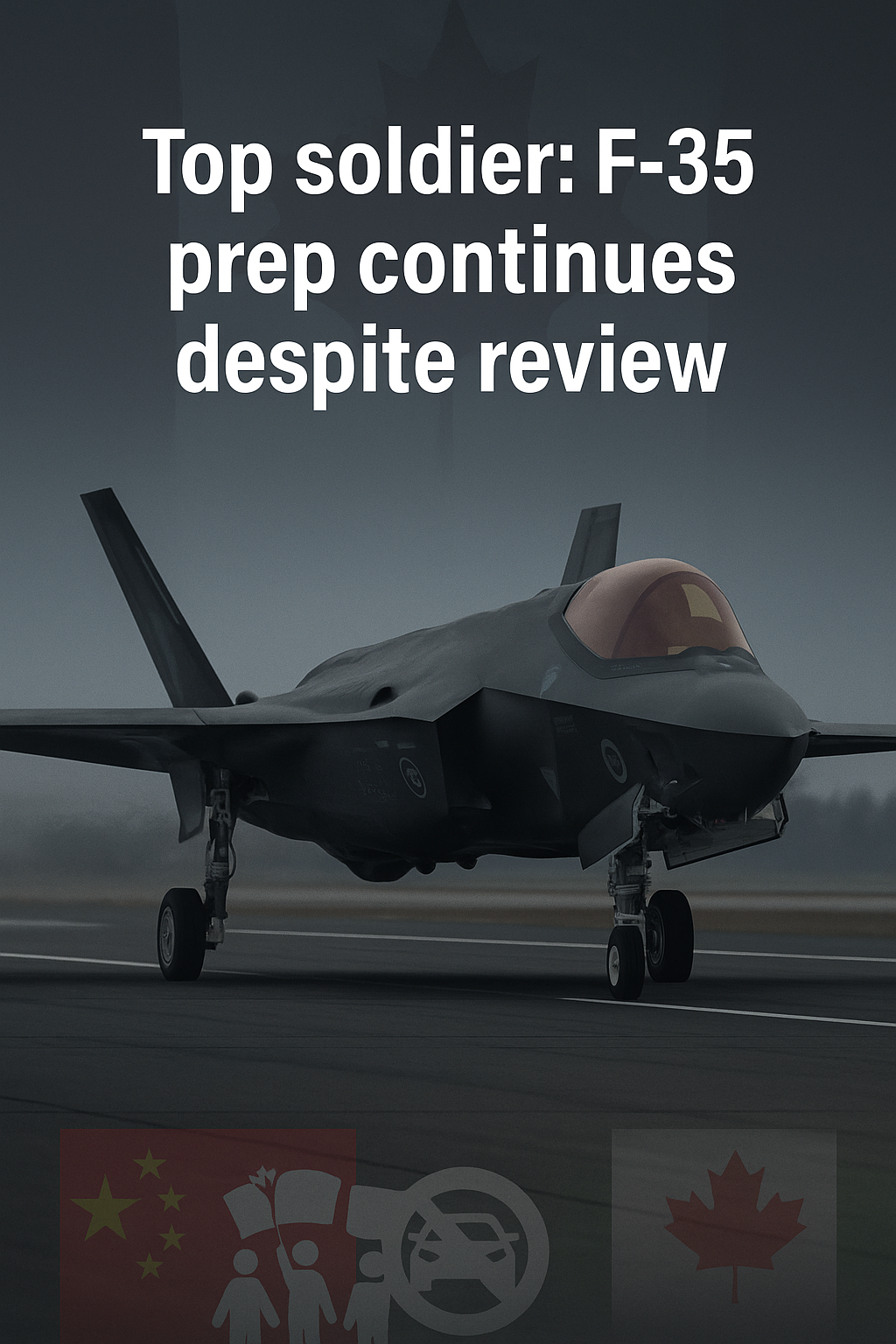Ottawa – Canada’s top military leadership has reaffirmed that preparations for the F-35 fighter jet program are continuing, even as the federal government conducts a review of defense spending priorities. The assurance comes amid growing speculation about possible delays or cutbacks to the multi-billion-dollar procurement project.
Chief of the Defence Staff Gen. Wayne Eyre said in a press briefing that work related to the Royal Canadian Air Force’s (RCAF) integration of the F-35 Lightning II is “moving forward on schedule,” with infrastructure, training, and operational readiness efforts already underway. “The review process is ongoing, but from a military standpoint, we are moving forward with what needs to be done,” Eyre said.
Canada formally signed the agreement to acquire 88 Lockheed Martin F-35s in 2022, a long-awaited decision after years of debate and political controversy. The jets are expected to replace the aging fleet of CF-18s, giving Canada a fifth-generation fighter capability compatible with NATO and NORAD allies.
The first batch of aircraft is scheduled for delivery in 2026, with full operational capability targeted by 2032. However, reports of budgetary reassessments have raised questions about whether the government might scale back or delay parts of the acquisition plan in light of rising defense costs and shifting fiscal priorities.
Gen. Eyre emphasized that the military remains committed to ensuring that Canada’s air defense capabilities are not compromised. “The F-35 program is critical to maintaining our operational edge, protecting Canadian sovereignty, and meeting our international commitments. Our teams are fully engaged in preparing the necessary infrastructure and personnel,” he said.
Work has already begun at Bagotville and Cold Lake air bases, where new hangars, maintenance facilities, and training centers are being constructed to accommodate the advanced aircraft. The RCAF is also ramping up pilot training and coordination with allied air forces that already operate the F-35, including the United States, the United Kingdom, and Norway.
Defense analysts say the government’s review does not necessarily indicate a slowdown but reflects a standard assessment of long-term expenditures amid broader economic pressures. “It’s unlikely that Ottawa would walk back such a major strategic investment,” said a senior defense expert. “The F-35 remains essential for Canada’s defense posture in the Arctic and in NATO operations.”
Opposition lawmakers, however, have pressed the government for transparency, arguing that Canadians deserve clarity on the total cost and implementation timeline.
Despite the political noise, Gen. Eyre’s statement appears designed to reassure allies and defense partners that Canada’s commitment to the F-35 project remains firm. For the Canadian military, the message is clear — modernization is not on hold, and the country’s next-generation fighter fleet is steadily taking shape.

